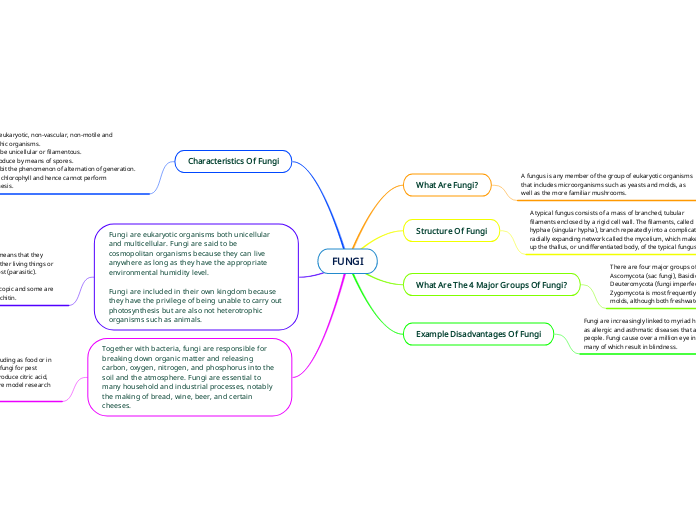arabera ayesha andini 3 years ago
296
FUNGI
Fungi are vital and diverse organisms divided into four major groups: Zygomycota, Ascomycota, Basidiomycota, and Deuteromycota. Structurally, they are composed of branched tubular filaments known as hyphae, forming a network called the mycelium which constitutes the fungal body.







